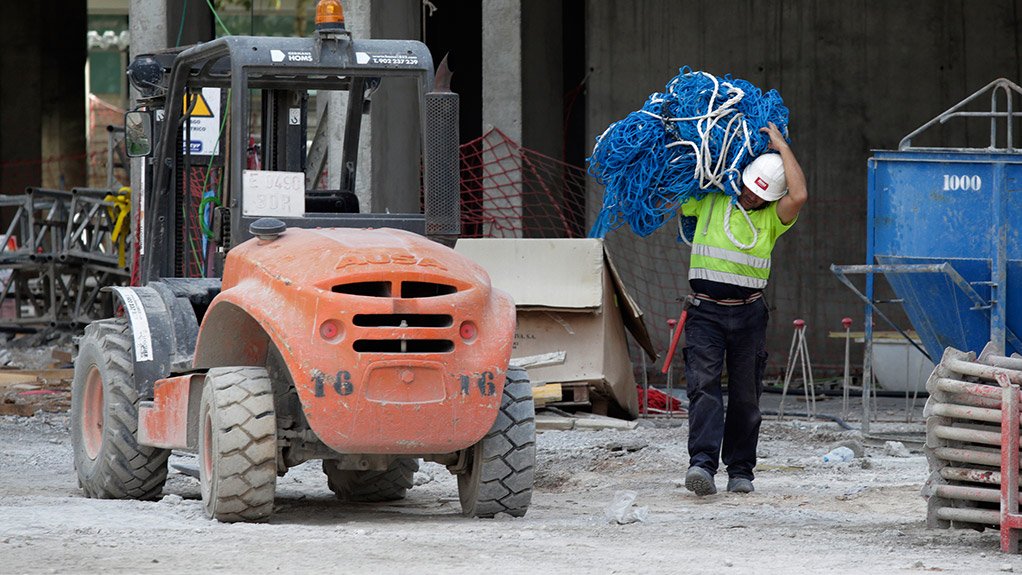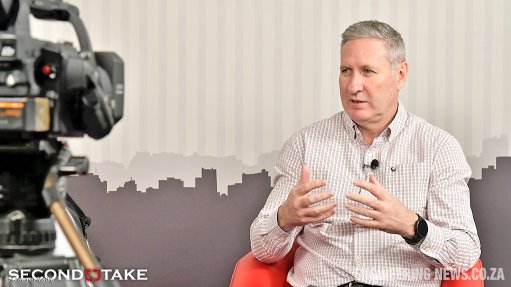Safety, risk ownership key to thriving projects


BUYING INTO SAFETY Project managers are responsible for creating a culture of safety at project sites
Photo by Bloomberg
Effective risk-mitigation measures and a sound safety- management system are integral to the development of a successful project, stipulates global mining and engineering planning and service provider WSP | Parsons Brinckerhoff.
The company has been operating in Africa for the past 20 years and has been responsible for delivering engineering and project management services in the property, healthcare and government and infrastructure sectors.
Further, the company’s geotechnical services in Africa comprise fast, cost-effective foundation assessments for design and tender purposes to large-scale geotechnical site investigations for major industrial and infrastructural development.
WSP is involved in major African mining projects such as the Mana gold processing facility, in Burkina Faso, owned by Canadian-gold producer SEMAFO.
WSP is well versed in Africa’s risk climate, with the company’s client and project director Ian Beaumont explaining that risk management must prompt not only owners to identify risks and mitigation processes but also personnel who will “own” the risks of a project and be accountable for them.
“It is imperative that owners have risk- mitigation measures in place and, if risks cannot be prevented, contingencies covered within the budget at the beginning of the project must counter these risks,” he tells Mining Weekly.
“However, what is imperative is that there are people to own and manage those risks. Once people have been identified and allocated the responsibility of mitigating the various risks within a project, they need to keep monitoring the risks on a weekly and monthly basis, depending on the size and duration of a project.”
Beaumont emphasises that constant monitoring of the risks associated with a project is important. If project managers are not aware of them, they could manifest in significant expenses for the project.
Although software technology has played a crucial part in providing a risk mitigation tool for project managers, he states that the technology should not be relied on too heavily and lists several general stages of effective risk management.
Project managers must identify the risk, quantify it, identify the owners of the risk and, finally, practically apply the risk mitigation measures to a project by determining what would happen if the risk came to fruition.
“These steps ensure that the impact of possible risks on a project are anticipated and effectively mitigated. The key aspect for project managers to remember is that, if risks do not have ownership, they will generally manifest themselves and could cost the project a considerable amount of money,” Beaumont emphasises.
Culture of Safety
According to Beaumont, the success of a project, among a number of other factors, depends on it having a successful safety culture and management system in place, but, most importantly, on the buy-in from workers and contractors.
He explains that one of the biggest misconceptions in project management is that safety is solely the responsibility of a company’s or project’s safety department. Safety is, in fact, the responsibility of everyone, in particular the project manager, the site managers, the foreman and the engineers, he highlights.
“Those in management are the ones who must create a culture of safety at every project management site. When a safe culture has been established it will ensure the buy-in of all the employees associated with that project.”
A safety department must collate and administer safety statistics, provide advice on relevant legislation and identify training needs that will enable a manager to pinpoint safety issues and make the necessary recommendations to address safety irregularities, Beaumont states.
It is difficult to develop a culture of safety but the process must start from the project’s inception and design stage. It is not achieved overnight, he claims. The lack of such a safe culture becomes apparent when a site is untidy and where there is inadequate protection in the interfacing of site vehicles and personnel, inadequate signage, and poorly demarcated lay-down/storage areas, which could lead to accidents.
When project managers create the correct culture and ensure that projects fall within the required safety regulations, efficient and cost- effective outcomes will be achieved, resulting in a successful project, maintains Beaumont.
Article Enquiry
Email Article
Save Article
Feedback
To advertise email advertising@creamermedia.co.za or click here
Comments
Announcements
What's On
Subscribe to improve your user experience...
Option 1 (equivalent of R125 a month):
Receive a weekly copy of Creamer Media's Engineering News & Mining Weekly magazine
(print copy for those in South Africa and e-magazine for those outside of South Africa)
Receive daily email newsletters
Access to full search results
Access archive of magazine back copies
Access to Projects in Progress
Access to ONE Research Report of your choice in PDF format
Option 2 (equivalent of R375 a month):
All benefits from Option 1
PLUS
Access to Creamer Media's Research Channel Africa for ALL Research Reports, in PDF format, on various industrial and mining sectors
including Electricity; Water; Energy Transition; Hydrogen; Roads, Rail and Ports; Coal; Gold; Platinum; Battery Metals; etc.
Already a subscriber?
Forgotten your password?
Receive weekly copy of Creamer Media's Engineering News & Mining Weekly magazine (print copy for those in South Africa and e-magazine for those outside of South Africa)
➕
Recieve daily email newsletters
➕
Access to full search results
➕
Access archive of magazine back copies
➕
Access to Projects in Progress
➕
Access to ONE Research Report of your choice in PDF format
RESEARCH CHANNEL AFRICA
R4500 (equivalent of R375 a month)
SUBSCRIBEAll benefits from Option 1
➕
Access to Creamer Media's Research Channel Africa for ALL Research Reports on various industrial and mining sectors, in PDF format, including on:
Electricity
➕
Water
➕
Energy Transition
➕
Hydrogen
➕
Roads, Rail and Ports
➕
Coal
➕
Gold
➕
Platinum
➕
Battery Metals
➕
etc.
Receive all benefits from Option 1 or Option 2 delivered to numerous people at your company
➕
Multiple User names and Passwords for simultaneous log-ins
➕
Intranet integration access to all in your organisation


















